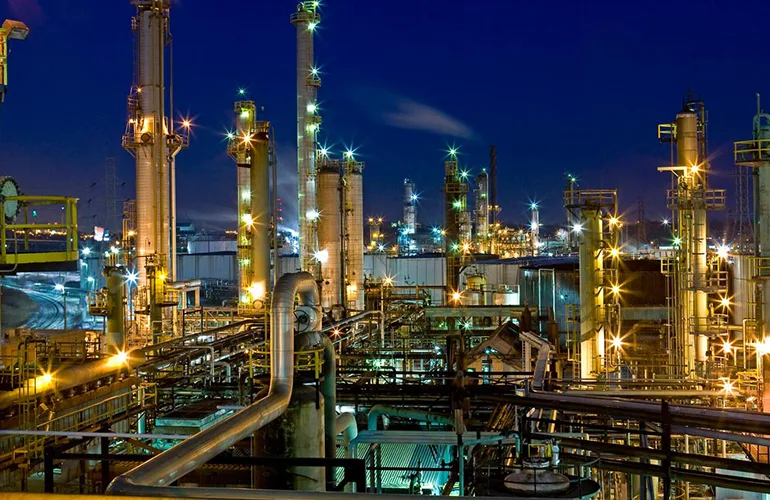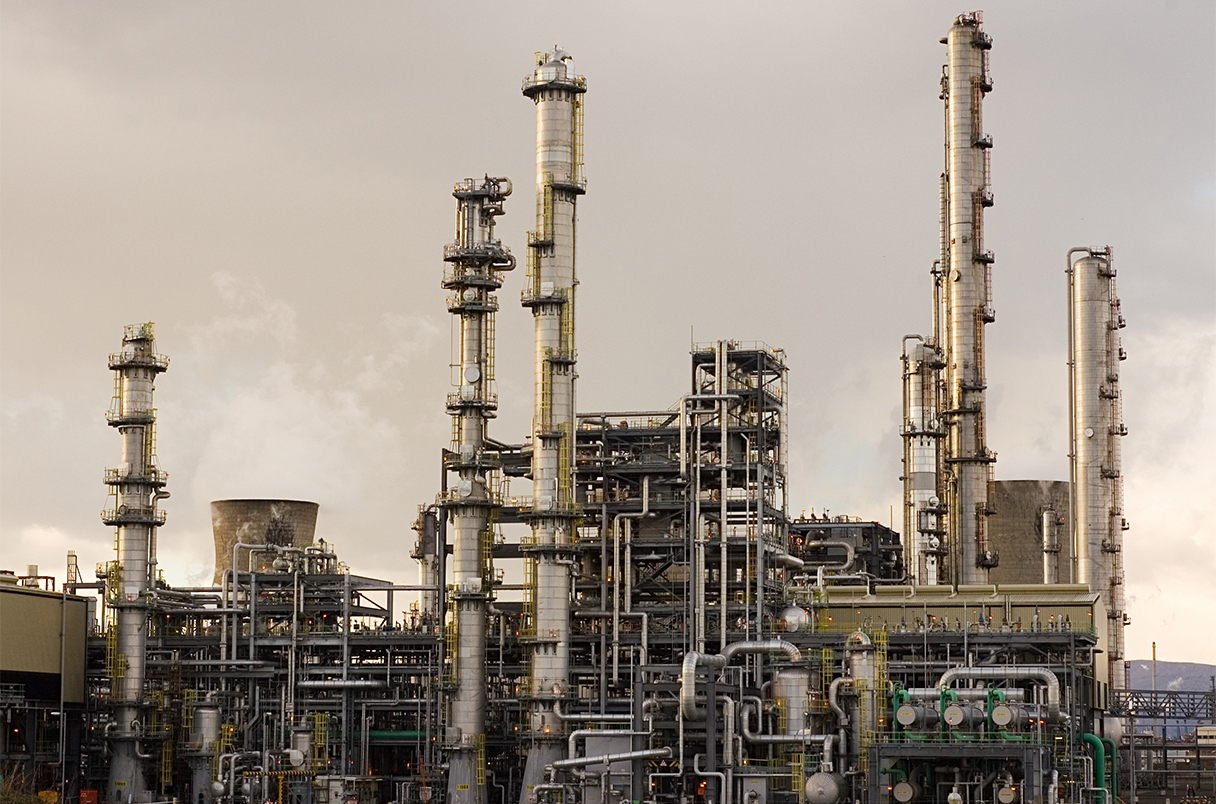In the ever-changing world of industrial activities, it is crucial to grasp the fundamental reasons behind accidents to cultivate a safety-oriented culture and mitigate potential hazards. This article explores seven essential accident causation theories, offering insights into the complex factors that play a role in workplace incidents.
What Is The Theory of Accident Causation?
The Theory of Accident Causation is both the art and science that seeks to understand the deeper roots of why accidents happen, exploring the various factors that contribute to them. It’s like investigating the pieces of a puzzle to figure out how they fit together.
The accident causation theory suggests that accidents result from a combination of factors, including human behavior, unsafe conditions, and the environment. By examining these elements, we can identify patterns and underlying causes, helping prevent future accidents and promote a safer environment. It’s a methodical approach to unraveling the reasons behind accidents, focusing on learning from the past to improve safety in the future.
What Are The 5 Factors of The Accident Sequence by Henry?
Heinrich’s Theory of accident, or known as the Domino Theory, is a straightforward yet compelling model, Heinrich’s (1959) domino effect model, comprises five components
- Ancestry and social environment
- Fault of the person
- Unsafe act and mechanical or physical hazard
- Accident
- Injury
The breakdown of the chain of events leading to accidents and injuries into five interconnected components is as follows.
1. Ancestry and Social Environment
This initial component refers to a person’s background, upbringing, and the influence of their social environment. Factors such as education, family, and cultural background can contribute to shaping an individual’s behavior and attitude toward safety.
2. Fault of the Person
The second stage involves the individual’s responsibility and accountability. It includes factors like an individual’s choices, decision-making, and adherence to safety protocols. Personal shortcomings or lapses can contribute to the occurrence of accidents.
3. Unsafe Act and Mechanical or Physical Hazard
The third component highlights the direct contributors to accidents. Unsafe acts by individuals, coupled with mechanical or physical hazards present in the environment, create a precarious situation. Examples include failure to follow proper procedures and the presence of equipment malfunctions or hazardous conditions.
4. Accident
This stage marks the occurrence of an actual accident resulting from the combination of the preceding factors. It is the point where the dominoes fall, representing the culmination of the chain of events leading to the accident.
5. Injury
The final component represents the adverse consequence of the accident – the injury. This could range from minor injuries to severe harm, depending on the nature and severity of the accident.
Now, let’s illustrate this model with a case study in the oil and gas industry. Consider a scenario where a worker is tasked with routine maintenance on an offshore drilling platform. The worker, influenced by a tight schedule and production pressures (Ancestry and Social Environment), neglects to wear proper personal protective equipment (Fault of the Person). Engaging in this unsafe act, the worker is exposed to a mechanical hazard – a malfunctioning piece of equipment (Unsafe Act and Mechanical or Physical Hazard). The culmination of these factors leads to an accident, where the malfunctioning equipment results in an unexpected release of pressure, causing injury to the worker (Accident and Injury).
In this case, Heinrich’s domino effect model helps us trace the sequence of events leading to the accident, emphasizing the importance of addressing each component to prevent similar incidents in the future. It underscores the interconnected nature of factors contributing to workplace accidents in the oil and gas industry.
What Is Petersen’s Accident Causation Theory?
Petersen’s Accident Causation Theory, which adapts Ferrell’s human factors of overload and also Heinrich’s domino theory and states that the causes of accidents/incidents are human error and/or system failure, is a method of understanding why accidents happen.
Just like examining the building blocks of an incident to find out what went wrong, this theory suggests that accidents result from a combination of personal factors, like an individual’s traits and habits, and environmental factors, such as the conditions in the workplace.
By looking at both aspects, we can identify the reasons behind an accident more comprehensively. Petersen’s theory helps us see that accidents are not just about what one person does; they also involve the surroundings and the situation. This approach aims to enhance safety by addressing both individual behaviors and the conditions in which they occur.
What Is a 5M Model For Accident Causation?
The 5M Model for Accident Causation, which comprises Man, Machine, Medium, Mission, and Management as five core areas where failing factors of accident/incident may appear, is a method used to understand why accidents happen. Think of it like sorting things into these categories to figure out what went wrong.
The five categories are Man (human factors), Machine (equipment and tools), Material (materials and substances), Method (work processes and procedures), and Environment (surroundings and conditions). By looking at each of these aspects, we can identify the factors contributing to an accident more clearly.
This model helps us see that accidents are often the result of a combination of factors related to people, machines, materials, methods, and the environment. It is a systematic way of analyzing accidents to improve safety and prevent similar incidents in the future.
What Is The Systems Theory of Accident Causation?
The Systems Theory of Accident Causation, which views a situation in which an accident may occur as a system composed of the following components Person (host); Machine (agency); and Environment, is a way of understanding accidents as the result of interconnected factors rather than isolated events.
1. Person (Host)
The “Person” or “Host” represents individuals involved in a system—those who can be directly or indirectly affected by an accident. This includes employees, workers, or anyone within the system. Their behavior, decision-making, skills, and physical and mental states are crucial factors. Understanding how individuals interact with the system and how their actions contribute to safety or potential hazards is fundamental to accident prevention.
2. Machine (Agency)
The “Machine” or “Agency” refers to the tools, equipment, and machinery within a system. This component recognizes that the tools people use, the technology implemented, and the mechanical aspects of the system play a significant role in accident causation. It involves assessing the design, maintenance, and functionality of machines, ensuring they align with safety standards and pose minimal risk. Examining how machines interact with individuals and the environment helps identify potential points of failure or improvement.
3. Environment
The “Environment” aspect encompasses the surroundings or conditions in which the system operates. This includes the physical workspace, atmospheric conditions, and any external factors that may influence the system.
Understanding the environment involves evaluating aspects like lighting, temperature, noise, and overall workspace layout. It also considers external factors such as regulations, organizational culture, and societal influences. Analyzing how the environment interacts with people and machinery provides insights into potential hazards and opportunities for enhancing safety within the system.
Systems theory sees accidents as a product of multiple factors within a system, including people, equipment, procedures, and the overall working environment. It emphasizes how these elements interact and influence each other, contributing to the occurrence of accidents.
By examining the entire system, this approach helps identify underlying causes and patterns that may lead to accidents, promoting a more comprehensive understanding to improve safety measures.
What Is The Accident/Incident Theory of Accident Causation?
The Accident/Incident theory of accident causation, where unsafe behavior is a result of overload, ergonomic traps, or a decision to err, is a way of understanding accidents by examining them as part of a broader sequence of events.
Using accident/incident theory is like looking at the steps that lead to an accident, much like unfolding a story. This theory suggests that accidents are not isolated incidents but rather part of a chain or series of events. Each event in this sequence contributes to the eventual occurrence of the accident.
By analyzing the factors and actions leading up to the accident, this approach helps identify opportunities for intervention and prevention. It encourages a proactive stance in addressing the root causes and improving safety measures to break the chain of events that may lead to accidents.
What Is The Epidemiological Theory of Accident Causation?
The Epidemiological Theory of Accident Causation is a way of understanding accidents by drawing parallels with the spread of diseases in a population. Epidemiological theory tries to see how accidents can have patterns and trends similar to the way illnesses might spread.
This theory suggests that accidents, like diseases, can have specific risk factors and common characteristics. As explained on sciencedirect.com, this theory uses models to analyze accidents, offering a framework to organize the various factors influencing their occurrence. Gordon (1949) divides these factors into categories based on whether they involve the person affected (victim), the causing agent (aggression), or the surroundings (local and surrounding environment).
1. Victim
The “victim” refers to the individual who experiences harm or injury as a result of an accident. This aspect focuses on understanding the characteristics and behaviors of the person affected. Factors such as the victim’s age, gender, physical condition, and psychological state are considered.
By examining the victim, researchers can identify patterns and trends related to specific demographics or traits that may contribute to accidents. This understanding aids in developing targeted interventions and safety measures to protect individuals from potential harm.
2. Aggression
The term “aggression” in this context refers to the causing agent or factors that initiate the accident. It involves examining the actions or elements that directly lead to the occurrence of harm. This could include factors like unsafe behaviors, equipment malfunctions, or procedural lapses.
By studying the aggression aspect, researchers aim to identify the specific causes and mechanisms that set the accident in motion. Analyzing these factors helps in implementing preventive measures and interventions to mitigate the risk of accidents caused by aggression.
3. Local and Surrounding
The “local and surrounding” component focuses on the environment in which the accident occurs. It considers the physical surroundings, including the immediate locality and broader environmental factors. This involves studying aspects like workplace design, atmospheric conditions, and overall environmental characteristics.
Understanding the local and surrounding environment is crucial as it provides insights into how external conditions contribute to accidents. This can include factors like poor lighting, inadequate signage, or other environmental hazards. By examining these aspects, interventions can be tailored to improve the overall safety of the environment and reduce the risk of accidents.
This method allows for a structured examination of accidents, akin to how epidemiology studies diseases in populations, helping identify patterns and factors contributing to accidents and guiding interventions for prevention.
What Is The Combination Theory of Accident Causation?
The Combination Theory of Accident Causation is an approach that recognizes accidents often result from a combination of factors rather than being explained by a single theory. It’s like understanding that various elements can interact to create a situation where accidents are more likely to occur.
This theory acknowledges the complexity of accidents and incorporates insights from multiple accident causation theories. By considering aspects from different theories, such as human factors, system failures, and environmental conditions, the Combination Theory provides a more comprehensive understanding of the factors contributing to accidents.
It suggests that no single theory can fully capture the intricacies of accident causation, and a combination of perspectives is needed to address the diverse influences on safety outcomes.
How To Prevent Accidents in Industrial Activities?
Preventing accidents in industrial activities involves a combination of proactive measures to ensure the safety of workers and the smooth functioning of operations. Here are key strategies
1. Comprehensive Training
Provide thorough training for all employees, emphasizing safety protocols, emergency procedures, and the proper use of equipment. Ensure ongoing education to keep everyone updated on best practices.
2. Regular Equipment Maintenance
Conduct routine inspections and maintenance of machinery and equipment to identify and address potential issues before they become hazards. Well-maintained equipment is less likely to malfunction.
3. Safety Signage
Display safety signage throughout the industrial facility to alert workers to potential hazards and guide them on safety procedures. Make sure signage is easily visible and regularly updated.
4. Personal Protective Equipment (PPE)
Enforce the use of appropriate personal protective equipment, such as helmets, gloves, and safety shoes. Ensure that PPE is readily available and regularly checked for effectiveness.
5. Emergency Response Planning
Develop and regularly practice emergency response plans. Conduct drills to ensure that employees are familiar with evacuation procedures and know how to respond to different types of emergencies.
6. Hazard Identification and Reporting
Encourage a culture of hazard identification and reporting. Workers should feel empowered to report potential dangers, and there should be a systematic process for addressing and resolving reported hazards.
7. Safe Work Practices
Establish and enforce safe work practices. Provide clear guidelines for handling materials, operating machinery, and performing tasks safely. Regularly reinforce these practices through training and communication.
8. Workplace Ergonomics
Design workspaces with ergonomic principles in mind to reduce the risk of musculoskeletal injuries. Ensure that workstations are properly set up, and provide tools and equipment that promote ergonomic comfort.
9. Regular Safety Audits
Conduct regular safety audits to assess the effectiveness of safety measures in place. Identify areas for improvement and address any issues promptly to enhance overall safety.
10. Communication and Training on Chemicals
Communicate information about the handling and storage of chemicals. Train employees on proper procedures for working with hazardous substances and provide adequate safety measures.
11. Leadership Commitment
Ensure that leadership is committed to a strong safety culture. Leaders should actively participate in safety initiatives, prioritize worker well-being, and lead by example.
By consistently implementing these strategies, industrial activities can create a safer environment, reduce the likelihood of accidents, and protect the well-being of workers.
In conclusion, understanding various accident causation theories provides engineers with a valuable toolkit for enhancing safety in their work environments. By delving into models like Heinrich’s Domino Theory, Petersen’s Theory, and the Systems Theory, you can gain insights into the complex interplay of factors contributing to accidents.
Applying these theories enables proactive identification and mitigation of risks, fostering a preventive rather than reactive approach to safety. By addressing psychological, environmental, and systemic aspects, engineers can develop comprehensive strategies for accident prevention.
To further empower yourself in accident prevention and root cause analysis, it is highly recommended that you consider undertaking Root Cause Analysis training provided by PetroSync. This specialized training equips engineers with advanced skills to identify the underlying causes of accidents, offering a structured approach to investigating incidents and implementing effective preventive measures.
By enhancing your knowledge through such training, you not only contribute to a safer working environment but also position yourself as a proactive and informed professional in safeguarding both your well-being and the overall safety of the workplace. Continuous learning and applying these methodologies can significantly strengthen your ability to mitigate risks and champion safety within the engineering realm.
Credit: Freepik

SEO specialist by day, fact-checker by night. An avid reader and content writer dedicated to delivering accurate and engaging articles through research and credible sources.






